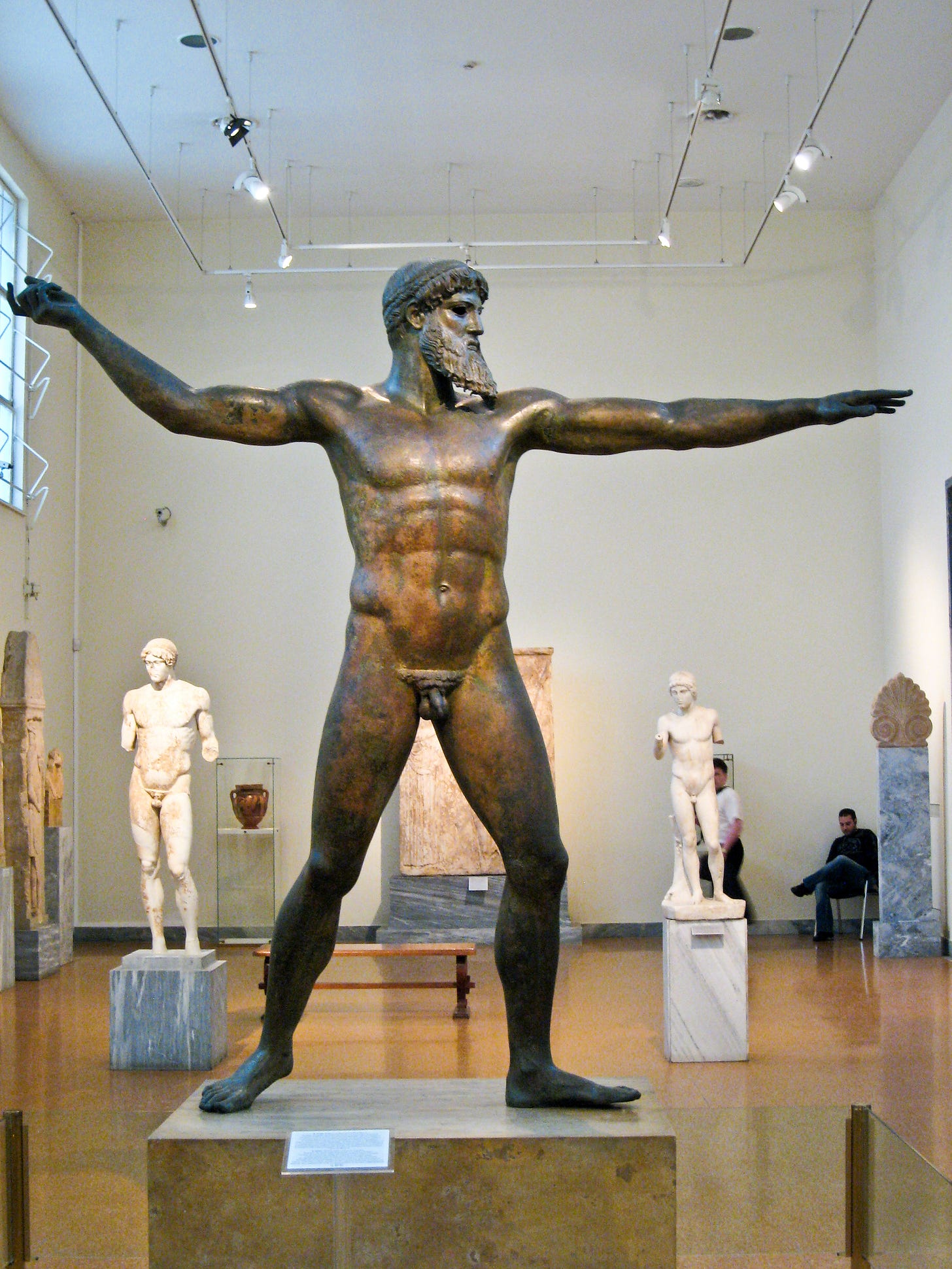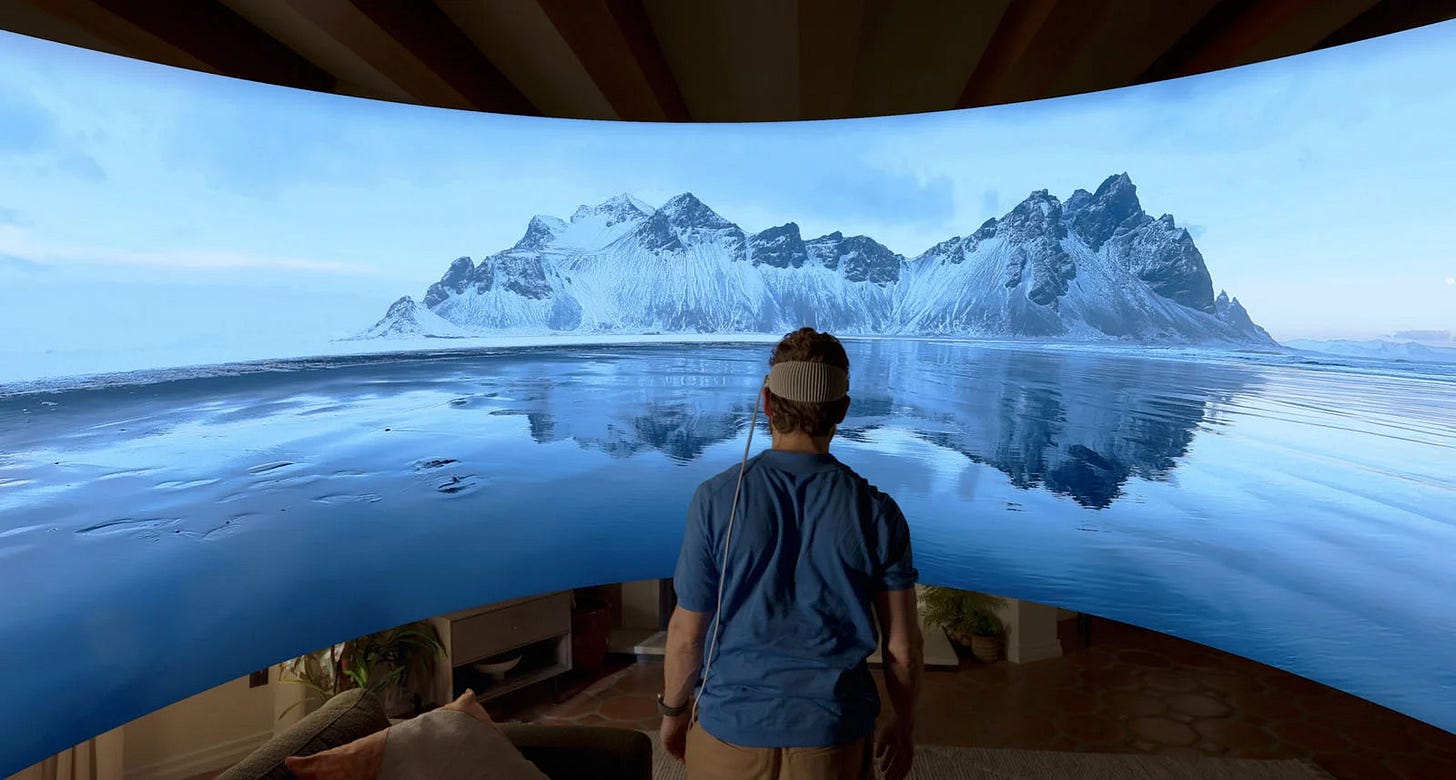Lightning Bolt Hubris
Enlightenment Prompt #10
REPORTAGE HAIKU
Fried car bonnet swirls
like Jupiter's stormy mass—
lightning bolt hubris.
hubris
noun. (in Greek tragedy) excessive pride towards or defiance of the gods, leading to nemesis.
nemesis
noun. the inescapable agent of someone's or something's downfall.
Fire and lightning, humans harnessing the power of the gods, the ancient Greeks had lots to say about that. Warnings aplenty.
Here is the planet Jupiter. It's swirling pattern of giant storms was what sprang to mind when I saw the bonnet of the burned out car in Notting Hill. In ancient mythology Jupiter was lightning-wielding head of the Roman pantheon of gods, a rebranded Zeus from Greek mythology.
Here is the Jupiter/Zeus wielding the electrical power of the heavens (the thunderbolt was not found when the statue was recovered from the sea). The Greek gods are much like us, they argue, fight, hold grudges. Jupiter seems barely qualified to harness such incredible power, which makes one wonder how we mere humans will fare.

My elderly French friend Jean-Pierre suffered greatly from depression. He had been an engineer with the French navy and in retirement, for his own amusement, had worked out how to make the perfect beeswax candle— it would melt inwards and reabsorb the liquid into its mass, ensuring an extremely long burn. I used the one he gave me on and off for ten years. Anyway, one day I asked him for his thoughts about the future of mankind. He gave a deep sigh, took a deep draw on his cigarette and said, "Morgan, we are like a crazy monkey put behind the wheel of a racing car. It's only a matter of time until the monkey crashes the car into a tree and kills himself.”
The risk of fulfilling Jean-Pierre’s prophecy and destroying ourselves with fire and electricity are comfortable dangers now, we tolerate them almost as casually as we do the danger of climbing into a combustion engine high-speed missile (aka the car). There’s a sense that there’s nothing much we can do but learn to live with the danger that comes hand in hand with the power (e.g., nuclear power gives us cheap energy and at the same time the power to destroy a city or our atmosphere).
This same type of thinking is rapidly pervading our approach to the virtual landscape of the digital world which is charging into our collective psychological borders with seemingly unstoppable efficacy. What can be done?
This is a new kind of electrical power—one that works through various devices to hyper-charge the electrical connections of the human brain—more content, brighter colour, faster, faster, when what we require in an already busy world is less input, slow time and muted tones.
The new Apple Vision product certainly seems marvellous, but I wonder if it will move us closer towards a point of extreme boredom-lessness? Elon Musk recently said that his new servant robots would take care of boring tasks like folding clothes and other menial tasks. This will be helpful in one way, certainly, but menial tasks also offer the opportunity for moving into the meditative state that is essential to maintain mental equilibrium (not to mention sanity).
When we enter a virtual environment (even through interaction with our phones and tablets) we seem to be entering into a state of heightened connection but in fact, we run the risk of disconnecting not only from our immediate surrounding environment, but more worryingly, from our internal environment, our meditative consciousness. The gateway to that state of being has a sign mounted upon it reading “BOREDOM” and current trends dictate that we flee at first sight of it.
Time and space to sit with ourselves, to allow the many consciousnesses that exist within the body to open up a dialogue and be heard, is an essential part of a healthy animal existence.
When the body becomes still or engaged in a repetitive activity, the conscious mind, which seeks the constant stimulation of the five senses, rebels at first, becomes agitated. The body can become agitated too. Then, given time, the mind-body settles, realizes it doesn’t need constant stimulus, and becomes serene. It can take as little as a few minutes to settle into this state, sometimes twenty is the norm if you’re starting out, but once you get into this meditative space there is a pure pleasure of existing in space that no digital environment can compete with. The heart slows, the mind becomes still, the eyes see clearly, light falling upon objects becomes beautiful and profound.
This is how the mind-body breathes, it’s an essential interface, much more important than ensuring your phone is fully charged. Even the relatively simple phones and tablets we have now and the apps on them are built to be intentionally addictive. What hope do we have when fully immersive virtual environments become the norm?
I’m not proselytizing from on high, I use these devices and I have two teenagers, I fight the good fight every day to reduce screen time, and I’m no luddite either, technology has as much power to enable as it does to destroy, but I am inspired by the EV car fire to remind us of the danger of this new electrically charged superpower. We must do what we can to avoid finding ourselves behind the wheel of the car in Jean-Pierre’s fable.
I like to offer practical solutions on Beautifully Broken. Here are some practices we can experiment with to help save our inner landscape (and those of our loved ones) as the electric revolution marches towards us.





